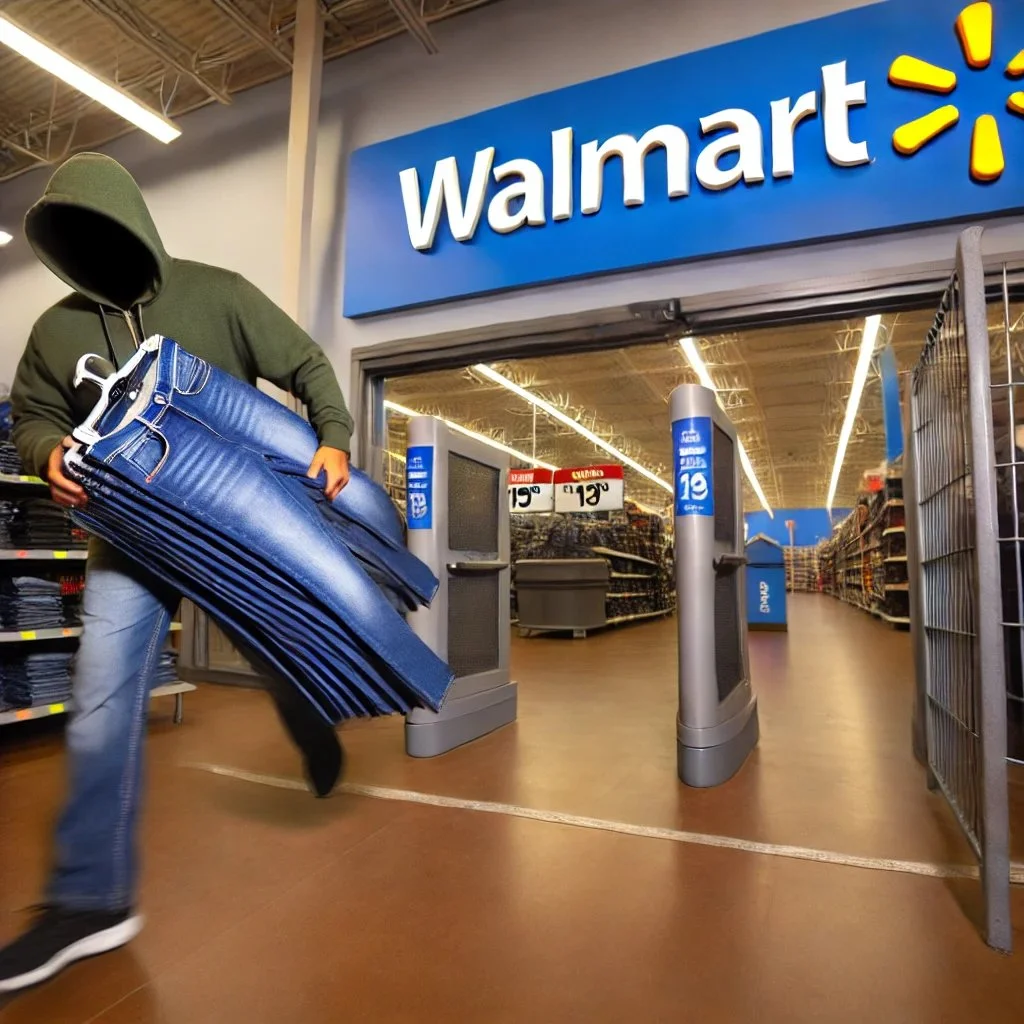Racking jeans at Walmart…
Retail theft has become a growing concern for businesses across the U.S., with organized retail crime (ORC) taking center stage. These sophisticated crime rings steal vast amounts of merchandise and sell it through illicit channels, impacting everything from store profits to customer experiences and even employee safety. Today, October 24, 2024, marks Fight Retail Crime Day, a pivotal event spearheaded by the National Retail Federation (NRF) to address this issue head-on. The day brings together retailers, loss prevention experts, lawmakers, and community leaders to advocate for stronger protections and measures to combat ORC.
One of the simplest yet most effective tools in the fight against retail theft is security tags—an integral part of modern loss prevention strategies. These tags, often paired with Electronic Article Surveillance (EAS) systems, are placed on products and trigger alarms if a shoplifter attempts to remove the item from the store without deactivating the tag. Security tags can act as a deterrent to opportunistic theft while providing real-time alerts to staff in the event of theft attempts.
Why Security Tags Matter in Combating Organized Retail Crime
Security tags have long been a staple of in-store protection, but their importance is magnified when dealing with organized retail crime. ORC groups often target high-value items, such as electronics, luxury goods, and even everyday household items, stealing in bulk to resell the products on the black market. By incorporating RFID tags, ink tags, and magnetic tags on such items, retailers can create a line of defense that makes it more difficult for thieves to succeed.
Here are three ways security tags play a critical role in fighting retail crime:
1. Deterrence: Security tags are visible to shoppers, and their presence alone can discourage theft. ORC groups often prefer to target stores where security measures are lax. By visibly tagging merchandise, retailers send a clear message that theft will not go unnoticed.
2. Immediate Alerts: When paired with EAS systems, security tags provide real-time alerts when someone attempts to leave the store with unpaid goods. This is particularly effective in stopping the rapid “sweep” style thefts that ORC rings are known for, where large amounts of merchandise are taken in minutes.
3. Evidence for Prosecution: Security tags often contain unique identifiers that can be used to trace stolen goods back to their origins. In cases of organized retail crime, this helps law enforcement connect stolen goods with specific incidents, providing the evidence needed to prosecute thieves.
Advocating for Better Security Solutions on Fight Retail Crime Day
As part of today’s Fight Retail Crime Day, the NRF is pushing for the passage of the Combating Organized Retail Crime Act (H.R. 895/S. 140), which would provide federal resources and support for local and state law enforcement agencies to fight ORC. The Act would establish a national Organized Retail Crime Coordination Center to streamline the sharing of data and intelligence between retailers, law enforcement, and policymakers.
But legislative efforts are only part of the solution. Retailers themselves must continue to invest in loss prevention technologies, including advanced security tags that integrate with modern surveillance and tracking systems. These innovations not only safeguard merchandise but also ensure employee and shopper safety, as many ORC incidents have escalated to include violence.
The Future of Retail Security
Security tags, while effective, are just one piece of the puzzle. The future of retail security will likely involve more smart technology, including AI-powered cameras and predictive analytics. However, physical deterrents like security tags will remain a vital component of store-level protection, especially as ORC tactics evolve.
Today, on Fight Retail Crime Day, the message is clear: combating organized retail crime requires a multi-pronged approach. Retailers must remain vigilant, law enforcement needs stronger tools, and legislators must pass policies like the Combating Organized Retail Crime Act to address this national issue. Security tags, though seemingly simple, represent a key part of this broader strategy, offering a frontline defense against both opportunistic theft and coordinated criminal efforts.
As we move forward, the retail industry must continue to innovate and collaborate to keep stores safe and secure for everyone.


